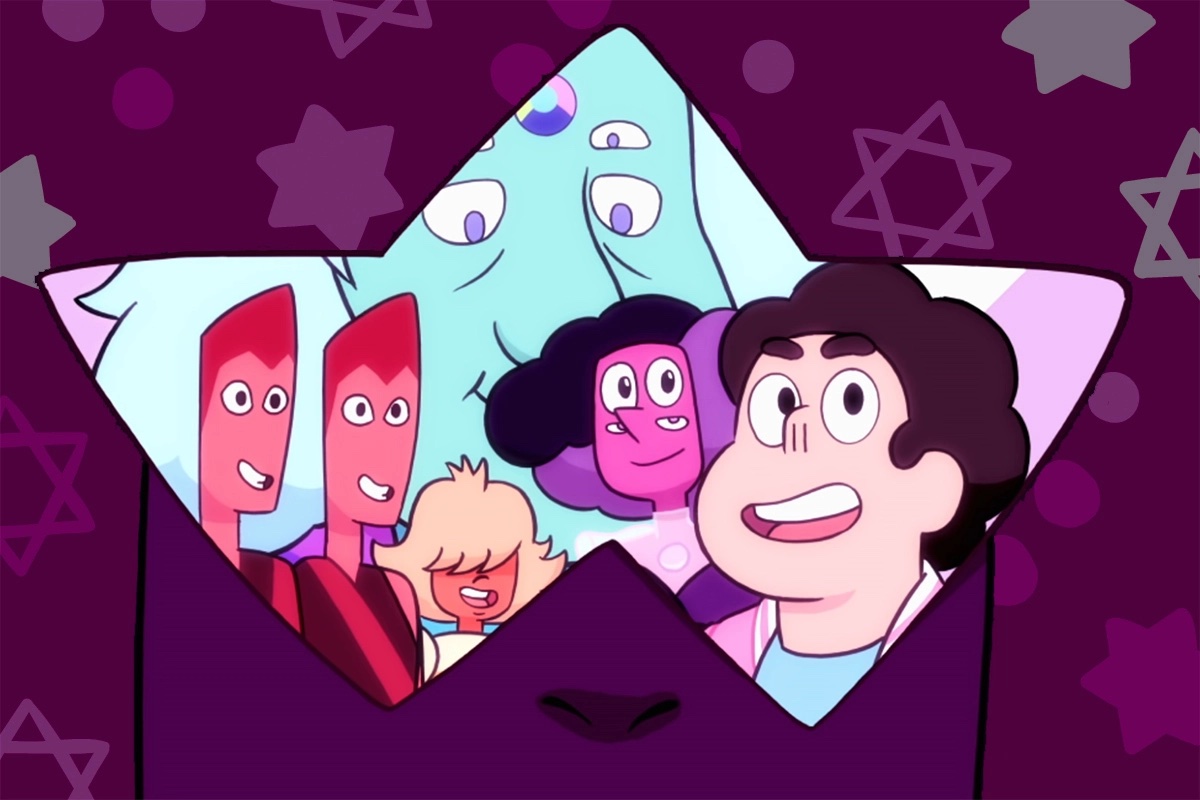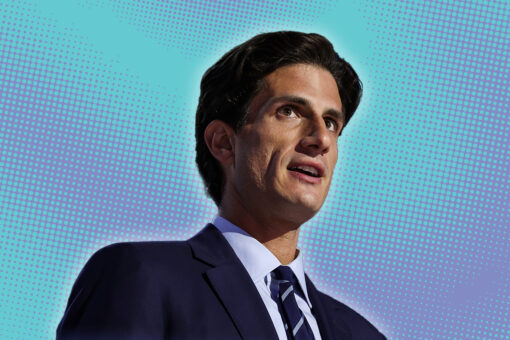Ten years ago, “Steven Universe” was a fun new addition to Cartoon Network. Eight years ago, it had grown into the most revolutionary children’s cartoon on television. Around three and a half years ago, it ended — for the third time. Today, I couldn’t tell you if it was ahead of its time or if it’s a show that only could have succeeded at the time it did, but I can tell you I miss it.
For those who haven’t seen it, “Steven Universe” is about a boy whose dad is human and whose late mom was the leader of the Crystal Gems, a team of gem-based aliens dedicated to defending Earth from other alien threats. Steven lives with the remaining Crystal Gems: protective Pearl, fun-loving Amethyst and stoic Garnet. Over the course of the series, he learns how to use his powers, uncovers secrets his family has been hiding and, as the cast sings in the theme song, “will always find a way” to help those who need it.
Like the earlier Cartoon Network hit “Adventure Time,” which “Steven” creator Rebecca Sugar wrote many of the best and saddest episodes of, “Steven Universe” starts off as a light episodic comedy before gradually revealing a more complex mythology and heavier emotional undercurrents. Unlike “Adventure Time,” where the artists made up the backstory as they went along, “Steven Universe” had most of its original five-season arc charted out from the beginning, so even the silliest early episodes are packed with foreshadowing you’d only notice on rewatching.
Rebecca Sugar (who uses both she/her and they/them pronouns) based the main character off her brother Steven Sugar, who also worked as an artist on the show. Rebecca and Steven Sugar were raised by a Jewish father and a gentile mother, attending a reform synagogue and celebrating the Jewish holidays. Rebecca has directly connected Steven Universe’s experience growing up between Gem and human cultures to their own experiences growing up in an interfaith family – so while Steven Universe might not be canonically labeled as such, Jewish headcanons about the curly-haired hero are popular among the fandom.
In most cartoons, holiday episodes would be where we’d find out if any characters are Jewish. “Steven Universe,” however, didn’t do holiday episodes – “the holidays don’t exist” in the show’s alternate history, according to writer Matt Burnett. The ways human history played out differently in the aftermath of a thousand-year alien war seemingly led to a widely secular world. Yet even in this world, we know that Jews canonically exist, via the “Keep Beach City Weird” tumblr maintained by the show’s writers (writing in-character as conspiracy geek Ronaldo Fryman). Several hijabi extras also imply a Muslim presence in Beach City. If Christianity exists at all in the world of “Steven Universe,” its cultural influence is comparatively undetectable.
That’s not to say there aren’t Christian readings of “Steven Universe.” “Guy who’s simultaneously the child of and an incarnation of an all-powerful being” does sound kind of New Testament-y, and Steven wouldn’t be the first Jewish-created superhero to be read as a Jesus figure (hi, Clark Kent!). But when asked about such readings at San Diego Comic Con 2017, Rebecca Sugar acknowledged taking influence from “every voice that has ever spoken about peace” before redirecting the conversation towards more personal Jewish spiritual influences. At the time, they were studying Hillel the Elder, the sage whose teachings inspired the Mishnah and the Talmud, and quoted his famous statement, “If I’m not for myself, then who will be for me?” It’s easy to see echoes of this in Steven’s character arc, which in the end is about realizing his personal value is not defined by the expectations of others and that taking time for self-care is necessary.
Sugar also discussed being inspired by the “gentleness with which [Hillel] approached everything.” Gentleness is one of the defining traits of Steven’s characterization, and might be simultaneously the most praised and criticized quality of the show. While not strictly pacifist, Steven is a deeply sensitive boy who seeks out non-violent solutions to problems whenever possible and is always willing to give people second chances. This approach proved most controversial when it came to the Diamonds, the main antagonists of the original five-season arc. While the Diamonds’ redemption arc was admittedly slightly rushed, the show’s popularity led to two bonus “series finales” – “Steven Universe: The Movie” and the epilogue series “Steven Universe Future.” These follow-ups address basically every good-faith criticism of the original run, offering deeper nuance on the topic of restorative justice.
“Steven Universe”’s most influential legacy is in its groundbreaking queerness. The Season 1 finale reveals that (ancient spoilers even non-fans know by now) Garnet is the fusion of two other Gems, Ruby and Sapphire. Fusion powers are used as an all-purpose metaphor for different types of relationships, but Ruby and Sapphire’s choice to stay together almost all the time is obviously romantic — in Season 5, Ruby and Sapphire have a full-blown wedding (Steven’s in charge of arranging the ceremony; note they have a chuppah). Queerness abounds throughout the series, from Pearl pining for Steven’s mother Rose Quartz to Steven and his friend Connie fusing into the genderqueer Stevonnie.
Getting all this representation into the series caused struggles with the network. The Gems being a sexless alien species that are merely perceived as femme offered a vague sheen of plausible deniability that allowed the Gems to be incredibly gay without being considered directly as such by network execs — while also secretly reflecting Rebecca Sugar’s own identity as a nonbinary woman. Sugar feared they weren’t allowed to speak openly about their nonbinary or bisexual identities and were told that specifically identifying characters as LGBTQ+ would get the show canceled. Getting the wedding approved and destroying all deniability resulted in Season 5 being cut short, resulting in the aforementioned rushed conclusion.
While “Steven Universe” faced censorship in international markets, it surprisingly faced seemingly no mainstream conservative backlash in the United States. As a millennial nerd who remembers James Dobson freaking out over a lesbian couple in an “Arthur” spin-off and SpongeBob maybe being kind of fruity, seeing “Steven Universe” run for seven years without parent groups protesting — and opening the door for later cartoons like “She-Ra and the Princesses of Power” and “The Owl House” to be even more direct in their queerness — felt nearly as significant as Obama ending Don’t Ask Don’t Tell or the Supreme Court legalizing gay marriage nationwide in terms of signaling a more tolerant America. I was not prepared when the anti-gays in cartoons backlash finally got activated over a token lesbian kiss in freaking “Lightyear,” of all things.
Since the end of “Steven Universe,” Rebecca Sugar has been keeping busy with music – they’ve contributed songs to other cartoons such as “Amphibia” and “Adventure Time: Fionna and Cake,” and just released their first album “Spiral Bound.” They’ve also made anti-racism PSAs using the “Steven Universe” characters and been actively involved in the Jewish-led immigrant rights group Never Again Action. Sugar has yet to announce a new animated project, but I’m looking forward to whatever she has in store.



